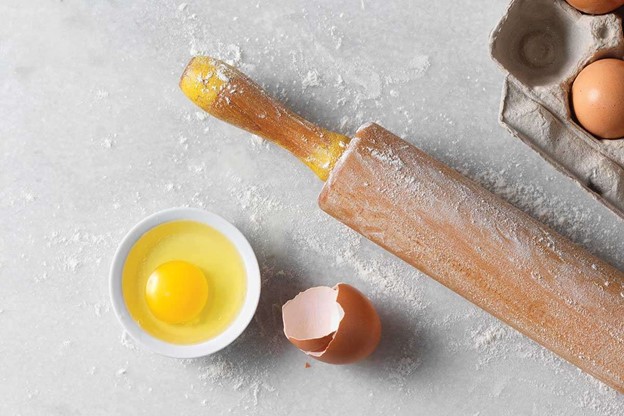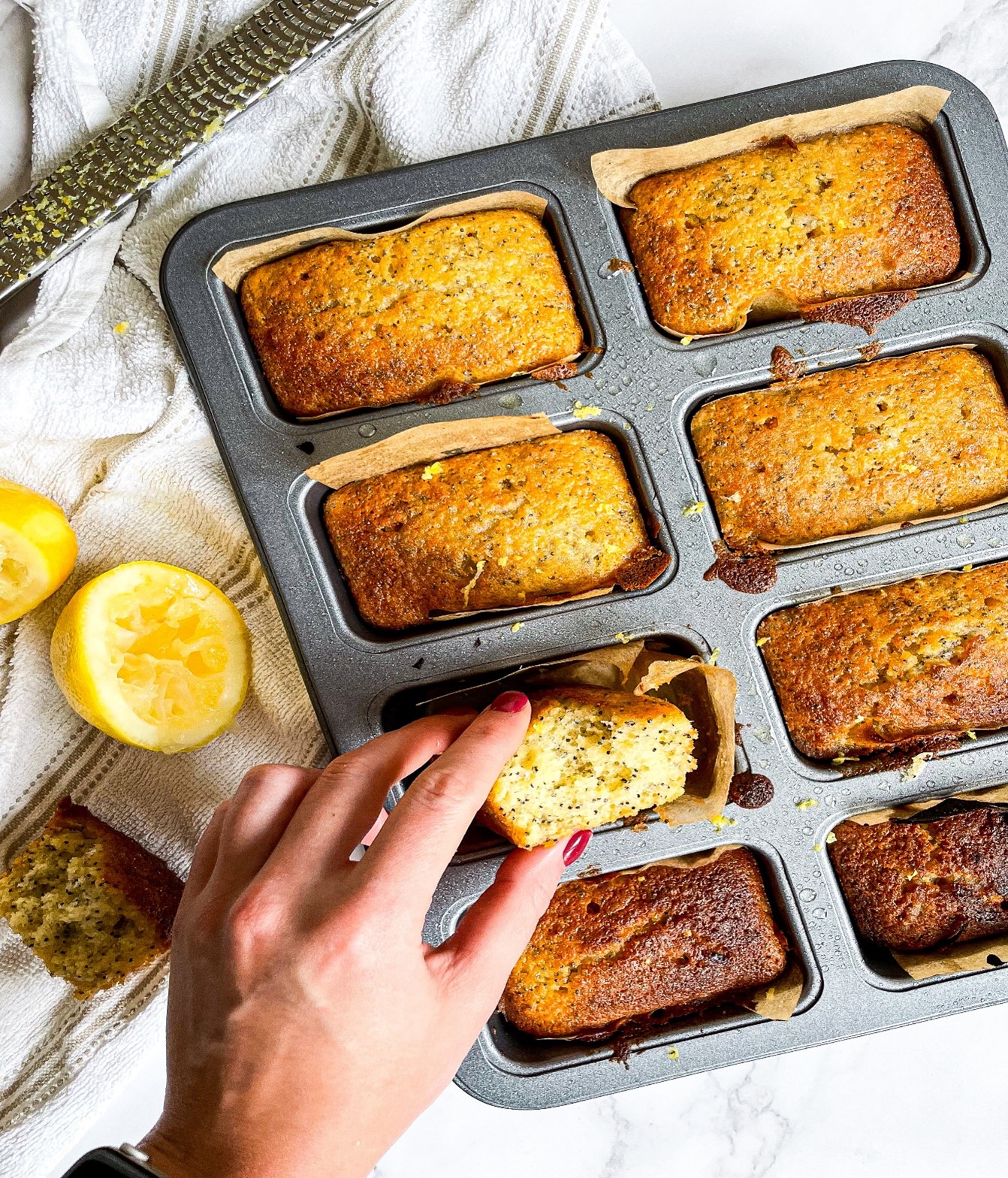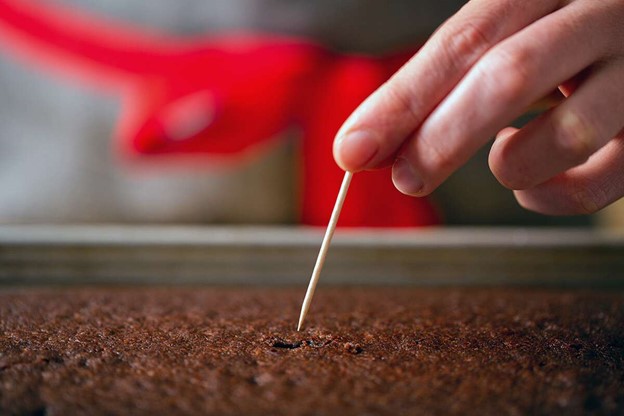A King Arthur Flour Researcher and Pro-Baker Answers 2 Very Good Questions
Awhile ago, Cook’n reader, Joy, emailed me with two very good questions: “Can you help us understand 1) what to do when a recipe requires only part of an egg (so we get ingredients right) and more importantly, 2) hints for shortening baking times for small containers? There has to be a better formula than standing there with a toothpick and repeatedly opening the oven door.”

I’ve been researching these questions ever since. Here are the answers, according to Rossi Anastopoulo, King Arthur Flour’s Content Editor. She has all sorts of experience with this.
Rossi explains that “Since MORE isn’t always better, it’s smart to know how to accurately reduce a recipe. But when it comes to reducing a recipe, however, you can’t simply divide all the ingredients in half and and expect success. There are many factors to consider: pan size, baking time, how in the world to divide an egg …”
Here's what Rossi says you need to do:
Dividing eggs. Use a kitchen scale to accurately divide a whole egg, yolk or white. A standard large egg outside of its shell weighs about 50g. The yolk is usually 14g, and the white is around 35g.

To use in a recipe, simply divide the weight of eggs called for by two (or by however much you're reducing your recipe). Lightly whisk the egg, then weigh out as much whisked egg as you need for your recipe.
You can use any leftover egg for an egg wash, or save in the fridge and add to the next morning's scramble to reduce waste. Liquid eggs in a carton are also helpful here — you can pour just what you need, with no extra egg left over.
Adjusting baking time. When baking a recipe in a smaller pan (whether the recipe is halved or a full recipe is divided into smaller containers), adjust baking time accordingly. Less batter and smaller versions bake faster.

Rossi says there's no strict rule to determine how long a reduced recipe needs to bake. It varies from 5% to 50% less time. Rather than guessing on precise baking time, you’ll have better success if you rely on your senses to determine when your recipe is fully baked.
In conclusion, Rossi’s answer takes us back to Joy’s original comment: “There has to be a better formula than standing there with a toothpick and repeatedly opening the oven door.” Rossi says there actually isn’t a better way, and that the standard rule of thumb is to set your timer for half the amount of time called for in the recipe. If a 9" x 13" cake takes 50 minutes to bake and you've halved the recipe to bake in a 9" pan, set your timer for 25-30 minutes.

If not done by then, Rossi says to continue checking regularly—every 5 or so minutes for cakes, quick breads, brownies/bars, and 1 or 2 minutes for cookies. Watch for visual clues to determine doneness (i.e. color, pulling away from the pan, etc.).
I wish I had more encouraging information for you all (especially for Joy). Sounds like it’s “toothpick patrol” when baking smaller versions. The good news—we’ve been doing right all along!
blog comments powered by Disqus

I’ve been researching these questions ever since. Here are the answers, according to Rossi Anastopoulo, King Arthur Flour’s Content Editor. She has all sorts of experience with this.
Rossi explains that “Since MORE isn’t always better, it’s smart to know how to accurately reduce a recipe. But when it comes to reducing a recipe, however, you can’t simply divide all the ingredients in half and and expect success. There are many factors to consider: pan size, baking time, how in the world to divide an egg …”
Here's what Rossi says you need to do:
Dividing eggs. Use a kitchen scale to accurately divide a whole egg, yolk or white. A standard large egg outside of its shell weighs about 50g. The yolk is usually 14g, and the white is around 35g.

To use in a recipe, simply divide the weight of eggs called for by two (or by however much you're reducing your recipe). Lightly whisk the egg, then weigh out as much whisked egg as you need for your recipe.
You can use any leftover egg for an egg wash, or save in the fridge and add to the next morning's scramble to reduce waste. Liquid eggs in a carton are also helpful here — you can pour just what you need, with no extra egg left over.
Adjusting baking time. When baking a recipe in a smaller pan (whether the recipe is halved or a full recipe is divided into smaller containers), adjust baking time accordingly. Less batter and smaller versions bake faster.

Rossi says there's no strict rule to determine how long a reduced recipe needs to bake. It varies from 5% to 50% less time. Rather than guessing on precise baking time, you’ll have better success if you rely on your senses to determine when your recipe is fully baked.
In conclusion, Rossi’s answer takes us back to Joy’s original comment: “There has to be a better formula than standing there with a toothpick and repeatedly opening the oven door.” Rossi says there actually isn’t a better way, and that the standard rule of thumb is to set your timer for half the amount of time called for in the recipe. If a 9" x 13" cake takes 50 minutes to bake and you've halved the recipe to bake in a 9" pan, set your timer for 25-30 minutes.

If not done by then, Rossi says to continue checking regularly—every 5 or so minutes for cakes, quick breads, brownies/bars, and 1 or 2 minutes for cookies. Watch for visual clues to determine doneness (i.e. color, pulling away from the pan, etc.).
I wish I had more encouraging information for you all (especially for Joy). Sounds like it’s “toothpick patrol” when baking smaller versions. The good news—we’ve been doing right all along!
 Alice Osborne
Alice Osborne
Weekly Newsletter Contributor since 2006
Email the author! alice@dvo.com
Sources:
- www.wikihow.com
- www.kingarthurbaking.com
- www.tastingthyme.com
